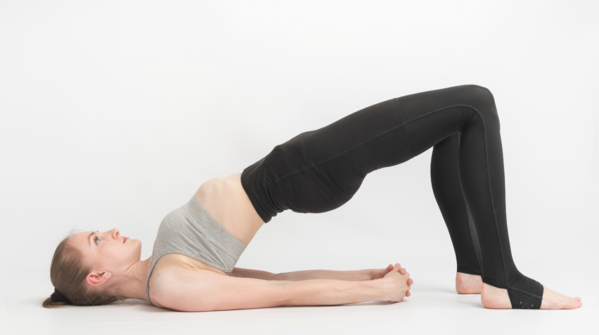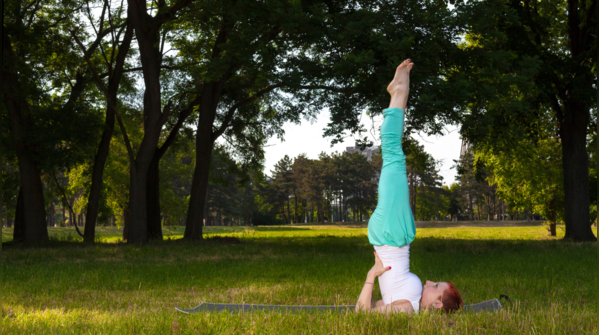Hormones act as the body's internal messengers, influencing mood, metabolism, and sleep. The thyroid gland, a butterfly-shaped organ at the base of the neck, plays a critical role in this system. Thyroid imbalances can lead to fatigue, weight fluctuations, anxiety, and menstrual irregularities. Fortunately, incorporating gentle and consistent yoga practices can support thyroid function and promote hormonal balance.
This isn't about strenuous workouts; it's about mindful movements. Here are six yoga poses to consider:

This pose soothes the nervous system and helps balance hormone levels. While it doesn't directly stimulate the thyroid, it calms the adrenal glands, reducing cortisol (the stress hormone). Elevated cortisol levels can disrupt hormonal balance and negatively impact the thyroid.
Viparita Karani is remarkably simple. Elevating the legs against a wall eases tension, slows the breath, and encourages a relaxed state. Relaxation supports healthy hormone function.

Bridge pose activates the thyroid gland through gentle neck compression. Beyond stretching the spine, this pose stimulates the thyroid, making it particularly beneficial for individuals with hypothyroidism (underactive thyroid).
Practiced with slow, mindful breathing, Setu Bandhasana also supports the chest and heart, fostering emotional and physical well-being.

Ustrasana enhances thyroid activity by stretching the neck and increasing circulation. This gentle backbend opens the front of the body, providing a deep stretch to the neck and throat, which can nourish the thyroid gland.
The chest-opening aspect of this pose is known to release pent-up emotions, contributing to emotional balance – a critical factor in hormonal health.

Ancient texts call Matsyasana the "destroyer of all diseases," highlighting its profound influence on thyroid function. This pose directly stretches the throat, stimulating the thyroid and parathyroid glands. Additionally, it improves posture, which is particularly beneficial for those who spend extended periods hunched over screens.
Proper posture allows for efficient nerve signal transmission, optimizing hormonal signaling.

Child's Pose aids the pituitary gland, the master hormone regulator, in relaxing and resetting. While appearing as a resting pose, Balasana possesses significant restorative power. It gently massages internal organs, calms the brain, and facilitates a healing state within the body.
Hormonal balance relies on effective communication between the brain and glands like the thyroid. Therefore, any pose that soothes the brain indirectly supports hormonal rhythm.

Known as the "Queen of Asanas," Sarvangasana is believed to directly impact the thyroid gland. This pose increases blood flow to the neck, stimulating the thyroid. However, it should only be practiced under expert guidance, especially for individuals with high blood pressure or neck problems.
Sarvangasana reverses gravity's effects on the body, sending fresh blood to the neck and head, nourishing the glands, particularly the thyroid. This inversion is also thought to promote mental clarity and inner peace.

Newer articles
Older articles
 Indian Astronaut Joins ISS: Shukla's Mission Ushers in New Era for India's Space Program
Indian Astronaut Joins ISS: Shukla's Mission Ushers in New Era for India's Space Program
 Ashada Gupt Navratri 2025: Unveiling Dates, Sacred Rituals & Hidden Significance
Ashada Gupt Navratri 2025: Unveiling Dates, Sacred Rituals & Hidden Significance
 Rishabh Pant's Unconventional Batting Redefining Cricket, Says Greg Chappell
Rishabh Pant's Unconventional Batting Redefining Cricket, Says Greg Chappell
 Moto G54 Price Slashed in India: Check Out the New, Lower Cost
Moto G54 Price Slashed in India: Check Out the New, Lower Cost
 JPG to PDF: A Graphic Designer's Guide to File Conversion and Quality Preservation
JPG to PDF: A Graphic Designer's Guide to File Conversion and Quality Preservation
 'The Traitors' Star Apoorva Mukhija Accuses Sudhanshu Pandey of Misogyny and Verbal Abuse After On-Screen Drama
'The Traitors' Star Apoorva Mukhija Accuses Sudhanshu Pandey of Misogyny and Verbal Abuse After On-Screen Drama
 Van der Dussen to Captain South Africa in T20I Tri-Series Against New Zealand and Zimbabwe
Van der Dussen to Captain South Africa in T20I Tri-Series Against New Zealand and Zimbabwe
 20 Minutes to a Healthier Brain and Heart: Neurologist's Simple Strategies to Combat Cholesterol, Blood Pressure, and Dementia Risk
20 Minutes to a Healthier Brain and Heart: Neurologist's Simple Strategies to Combat Cholesterol, Blood Pressure, and Dementia Risk
 England's Audacious Batters Claim They Could Have Chased Down 450 in First Test Win Over India
England's Audacious Batters Claim They Could Have Chased Down 450 in First Test Win Over India
 Popular Finance YouTuber "financewithsharan" Hacked: Security Measures to Protect Your Account
Popular Finance YouTuber "financewithsharan" Hacked: Security Measures to Protect Your Account